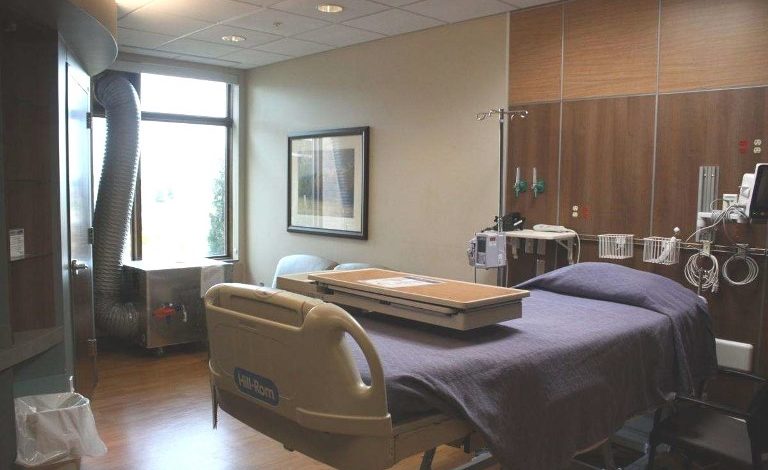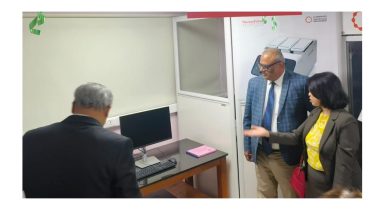Covid-19 Post Lockdown Hospital Response
Re-purposing hospital beds to suit Covid requirements

Dr Shweta Kumari (MBBS, MHA PGI, CHD), GMHE- IIMB

The COVID-19 pandemic is the defining global health crisis of our time and the greatest challenge we have faced since World War Two. WHO has declared the COVID-19 (SARS-CoV-2) outbreak as Public Health Emergency of international concern. There are currently 3,694,881 confirmed cases and 255,715 deaths from the COVID-19 outbreak globally as of May 5, 2020.
Coronavirus (covid 19) is an infectious disease caused by newly discovered corona virus. This is transmitted through droplets generated coughs, sneezes or exhales. These droplets are too heavy to hang in the air and quickly fall on surfaces. One can get infected easily by touching these contaminated surfaces or coming in close proximity to an infected person.
Preventing the spread of Covid cases in the healthcare setting is challenging and has hospitals have been looking to modern advances in infection control methods. Strategies and approaches within current infection control methods include active surveillance, early detection, isolation and case management, contact tracing and prevention of onward spread of SARS-CoV-2 infection and (but are not limited to) hand hygiene, environmental cleaning, use of personal protective equipment.
Quarantine and Isolation are important mainstay of cluster containment. These measures help by breaking the chain of transmission in the community. Quarantine refers to separation of individuals who are not yet ill but have been exposed to Covid virus and therefore have a potential to become ill. However, isolation refers to separation of individuals who are ill and suspected or confirmed of COVID-19.
Indian Scenario
As on April 17th 1,919 dedicated COVID Hospitals and COVID Health centres have been set up in the country, with capacity of 1.73 lakh isolation beds and 21,800 ICU beds( MoHFW). Yet, rooms for isolating airborne infectious disease are still in shortage in Indian hospitals. Only < 2 per cent of all hospital rooms are equipped for negative pressure, most probably because it is an added expense. There is a need for more such rooms, and hospitals have been improvising on their own to accommodate the increasing number of patients.
Double Whammy
In a hospital the Covid pandemic is a challenging situation, because healthcare providers not only treat infected patients but they treat non-infected patients and have to take care of reverse infection (from patient to doctor). Hospitals not only provide best course of treatment but also ensure that the virus is not being spread.
Ventilation Parameter
From the infrastructure point-of-view here are a few pointers for ventilation. To prevent the spread of the disease, the ventilation parameter should be of utmost importance. A few points to keep in mind:
- The Pressure management for appropriate airflow direction;
- Room air changes for dilution ventilation; and
- Filtration to remove infectious particles
Negative Pressure Isolation
So actually, what is negative pressure isolation room or airborne infection isolation room is actually just one big vacuum. Generally speaking, it sucks in air through the gap under the door from a common space—meaning the air entering the room isn’t designed to be sterile. Then, an exhaust fan ejects the diseased air in the room to the outside. These rooms need to spit out 30 to 40 per cent more air than they are taking in at any moment. That’s what creates the pressure, or the one-way flow of air.
The most effective way is to discharge the air outside. In this method, a HEPA filter is used to exhaust room air outside through the window. The two main purposes of the HEPA machine in this application are to clean contaminated air and induce negative pressure in the room because the discharged air is HEPA filtered, no extra precaution is needed for air discharge.
Temporary Negative Pressure
The existing ward can be converted into temporary negative pressure isolation (TNPI) in order to protect patients and staff from contracting or transmitting highly infectious diseases.
In this TNPI, a window adapter must be constructed out of wood to fit into a standard window, which provides connection to flex duct. The other end of the flex duct should be connected to the HEPA machine. Pressure differential of negative 2.5 Pa (pressure in corridor is greater than pressure in patient room) should be maintained. The pressure differential should be measured with a hand-held digital pressure gauge. The pressure should be monitored daily. When no longer needed, the HEPA filter and flex duct should be wiped down with a hospital-approved disinfectant.
Surge capacity
Surge capacity is the ability of a health system to meet an increased demand for health services. In resource-constrained settings, all positive COVID-19 cases can be cohorted in a ward with good ventilation. Similarly, all suspect cases should also be cohorted in a separate ward. However, under no circumstances, these cases should be mixed up. A minimum distance of one meter needs to be maintained between adjacent beds.
Features of negative isolation room
Ideally COVID-19 patients should be housed in single room/ cabin partitioned by fabricated sheet. However, if these options are not available, then beds could be put with a spatial separation of at least 1 meter (3 feet) from one another. To create a 10- bed facility, a minimum space of 2000 sq. feet area clearly segregated from other patient care areas is required.
- Preferably the isolation ward should have a separate entry/exit and should not be co- located with post-surgical wards/dialysis unit/SNCU/labour room etc.
- The access to isolation ward should be through dedicated lift/guarded stairs. There should be double door entry with changing room and nursing station.
- A trolley should be setup for PPE in the changing room with waste disposal bins to collect.
- Minimum furniture to be kept in the room.
- Sealed double doorways that provide a space for hospital staff to properly sanitize before exiting the room.
Adequate room ventilation
ASHRAE STANDARDS – 12 air changes/ hour and filtering of exhaust air is must for these rooms. A negative pressure in isolation rooms is desirable. Ideally these rooms may have standalone air-conditioning and should not be a part of the central air-conditioning. If air-conditioning is not available negative pressure could also be created through putting up 3-4 exhaust fans driving air out of the room. In district hospital, where there is enough space, natural ventilation may be followed. Such isolation facility should have large windows on opposite walls of the room allowing a natural unidirectional flow and air changes. The principle of natural ventilation is to allow and enhance the flow of outdoor air by natural forces such as wind and thermal buoyancy forces from one opening to another to achieve the desirable air change per hour. The isolation ward should have a separate toilet with proper cleaning and supplies.




